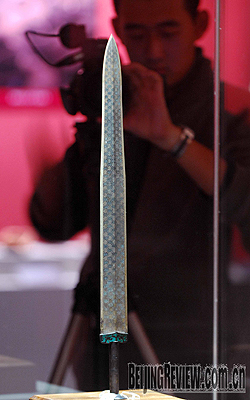| 
The painting treasure Luoshenfu by Chinese painter Gu Kaizhi (346-407), shown at the Capital Museum
Although the major focus of summer 2008 is the Olympic Games, Beijing is not short of other attractions for the hoards of visitors heading to the capital. A series of cultural exhibitions are part of the wider range of options for those who need a diversion from the track and field achievements of the world's top athletes.
Not only interesting to visitors, these exhibitions have also sparked the interest of local Beijingers, as most of the items are precious national treasures on public display for the first time.
Xi Fengyao, a magazine editor in Beijing, is one of many keen to visit the exhibitions. As a military affairs aficionado, he is deeply interested in an exhibition at the Military Museum of China.
"I went on the first day of the two-month exhibition despite the hot, humid weather," the 38-year-old Beijinger said, adding that the free entrance meant hundreds of people had queued to see the rare artifacts
The big attractions for Xi and other visitors are two particular relics: one is

the sword of King Goujian of the Yue State during the Spring and Autumn Period of China (B.C.770-B.C.476), and the other is the bamboo-slip version of The Art of War written by Chinese military strategist Sun Wu during the 6th century B.C. This is one of the oldest books on military strategy in the world, and also one of the most successful works on strategy that has influenced both Eastern and Western military thinking.
"Although the sword of King Goujian was buried for more than 2,000 years, it still shines and looks new," said Xi. He is very excited as the sword has to date been preserved in the museum of central China's Hubei Province since it was unearthed in 1965 and had limited public exposure.
The Capital Museum is the major stage of this cultural feast. Since July 23, five large-scale exhibitions have been held there. These are the China Memory-Treasure Exhibition About the Chinese Civilization Over 5,000
| 